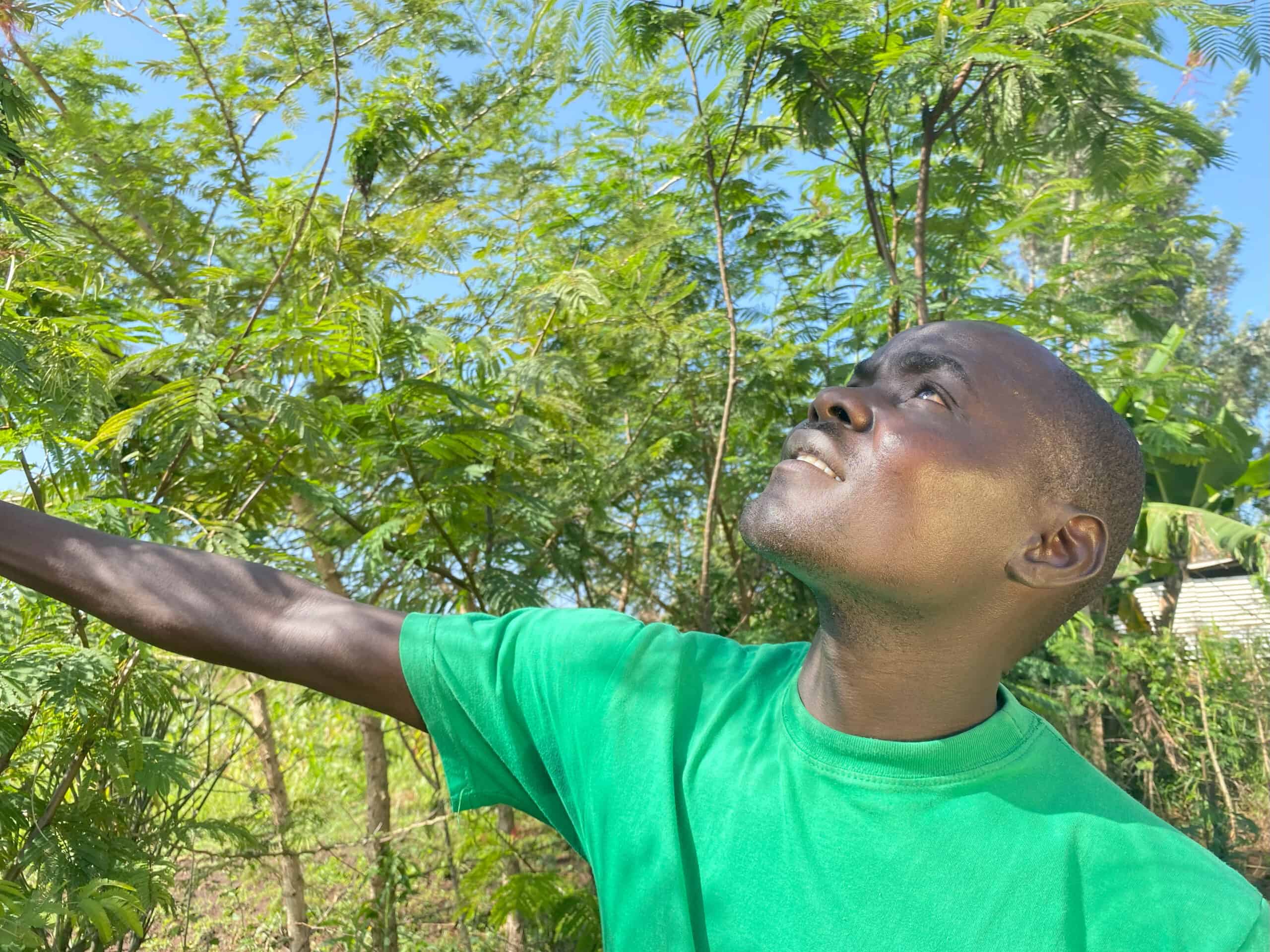When David Abach joined Trees for the Future’s Forest Garden Training Program in 2020, he identified roughly half a hectare of his Kenyan farm to convert into a Forest Garden. He quickly started learning about a sustainable agroforestry technique called the Forest Garden Approach from local Trees for the Future (TREES) staff.
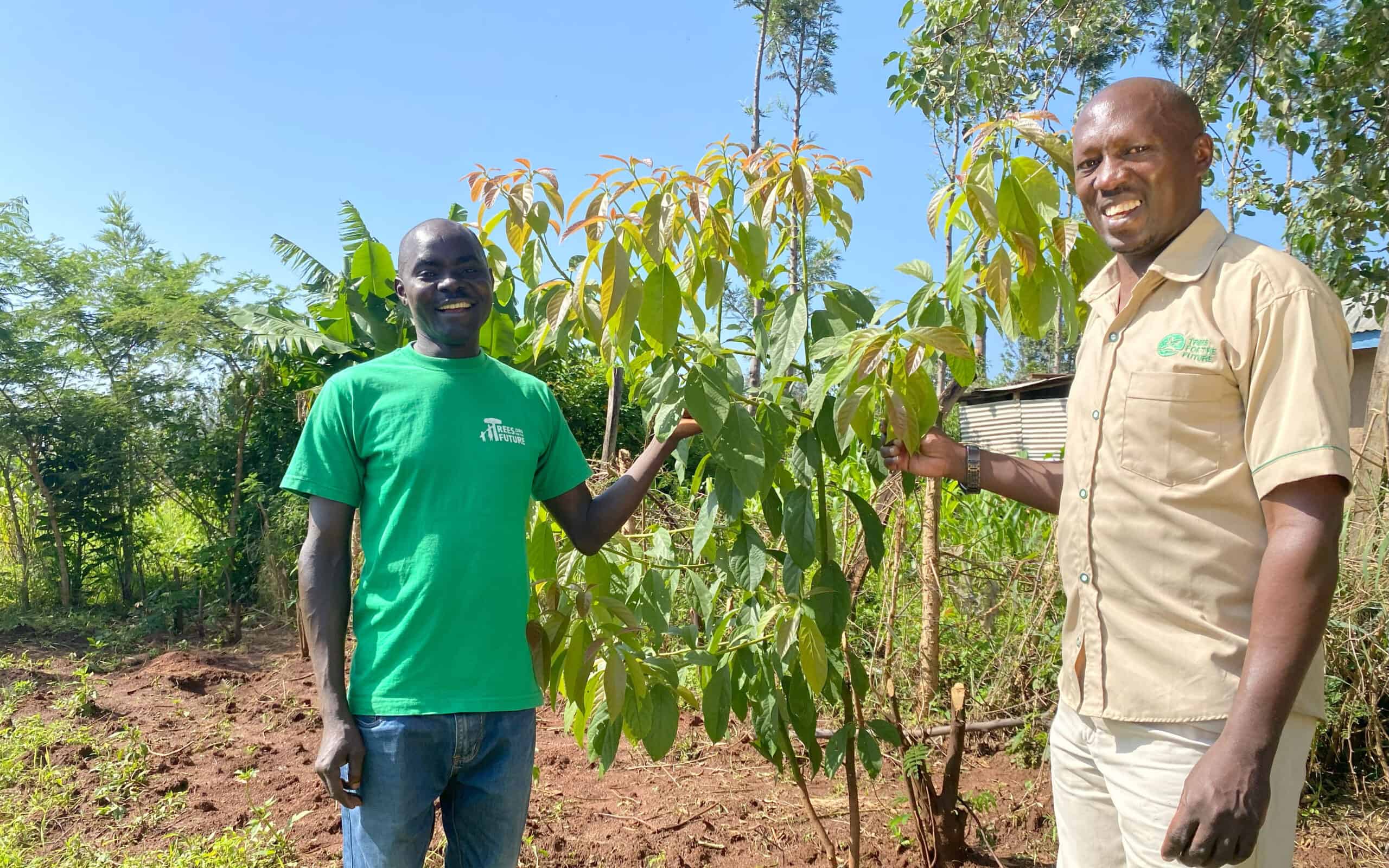
David (left) is part of a larger group of farmers in his community receiving Forest Garden training from Trees for the Future.
A Better Farm
“[My farm] is better today,” he says. “Previously, I planted only maize and beans. But because of Trees for the Future, I have alleys of Cajanus trees and vegetables for getting food.”
David is implementing a number of agroforestry techniques in his Forest Garden. Alley cropping with Cajanus (pigeon peas) helps increase the nitrogen in his soil. The living fence he planted around the perimeter of the Forest Garden enriches the soil, provides animal fodder, and serves as a windbreak.
“Without the trees if there is very heavy wind it can fell the crops.”
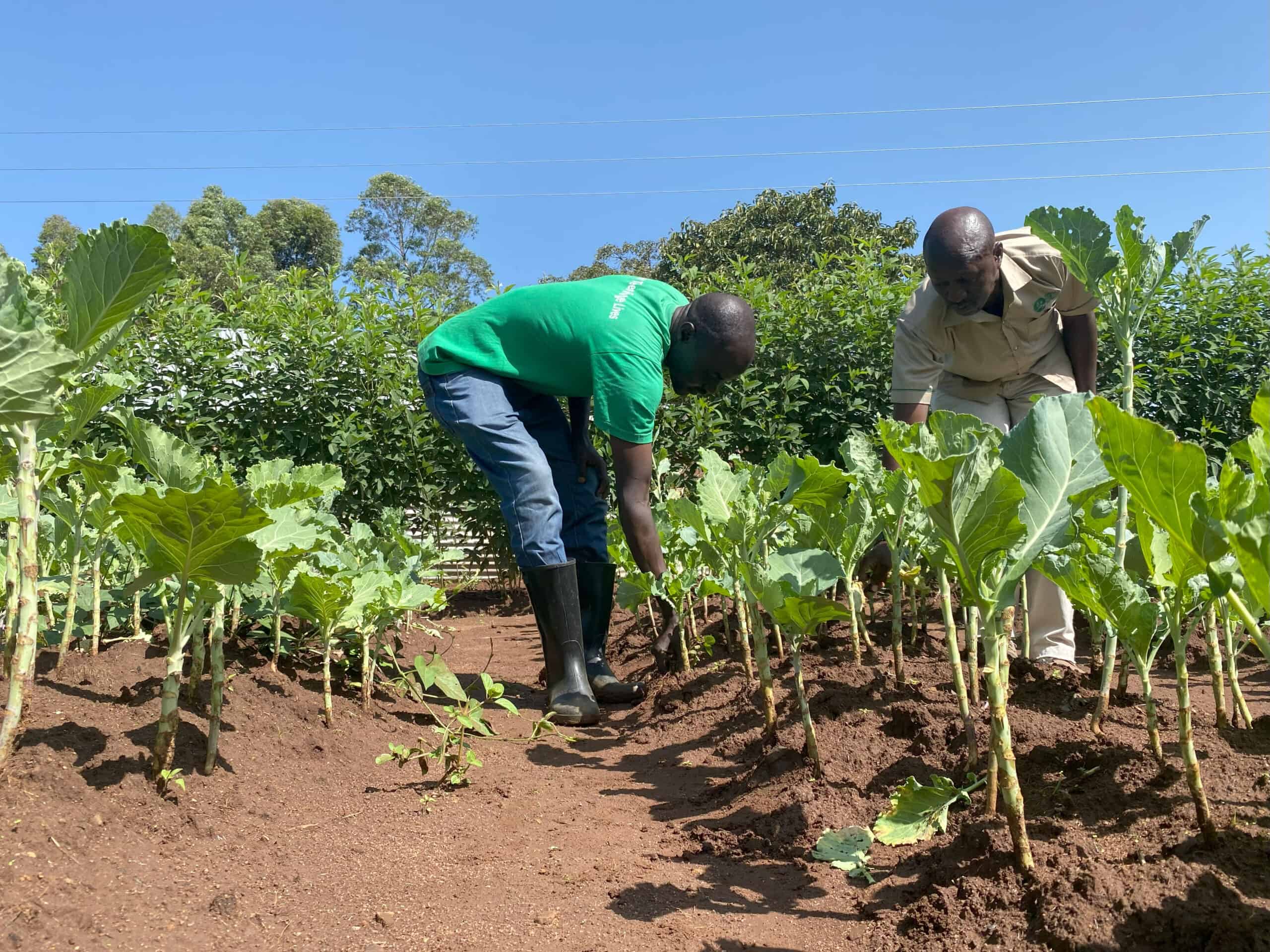
Thousands of Trees
In three years, David has gone from 12 trees on this section of his land to more than 3,300. The trees are already creating a micro-climate on his farm.
“During the dry season, there is [a different] climate within the permagarden that helps the crops to not dry so much, unlike when it is just bare.”
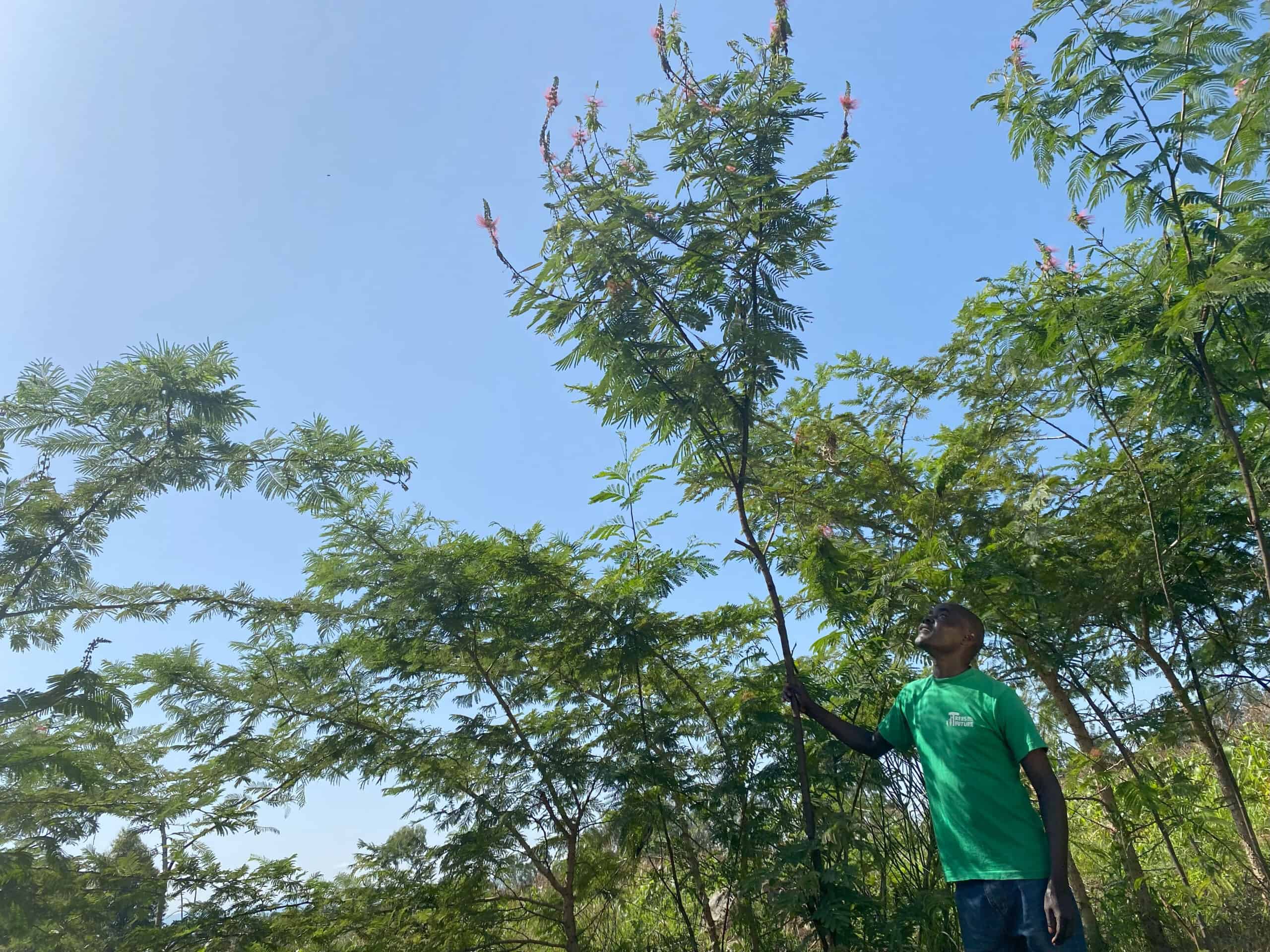
This towering Calliandra tree is one of thousands of fast-growing trees David has planted to improve his soil and protect his crops.
Joining the Carbon Market
Moving forward, those trees will earn David an additional stream of income through carbon credit sales. Through a partnership with Aspiration, TREES Forest Garden farmers in Kenya will be able to participate in the carbon market.
Better Soil
Outside his Forest Garden, David has continued to grow maize and beans using traditional methods. The difference between what grows inside the Forest Garden and outside of it is stark.
“There is a big difference in soil quality. If you compare where there are vegetables growing alongside the Cajanus and where there is maize [without Cajanus], you find that the maize is yellow. It shows that there is nutrient deficiency – unlike here where I am using compost. I see that the Forest Garden is better.”
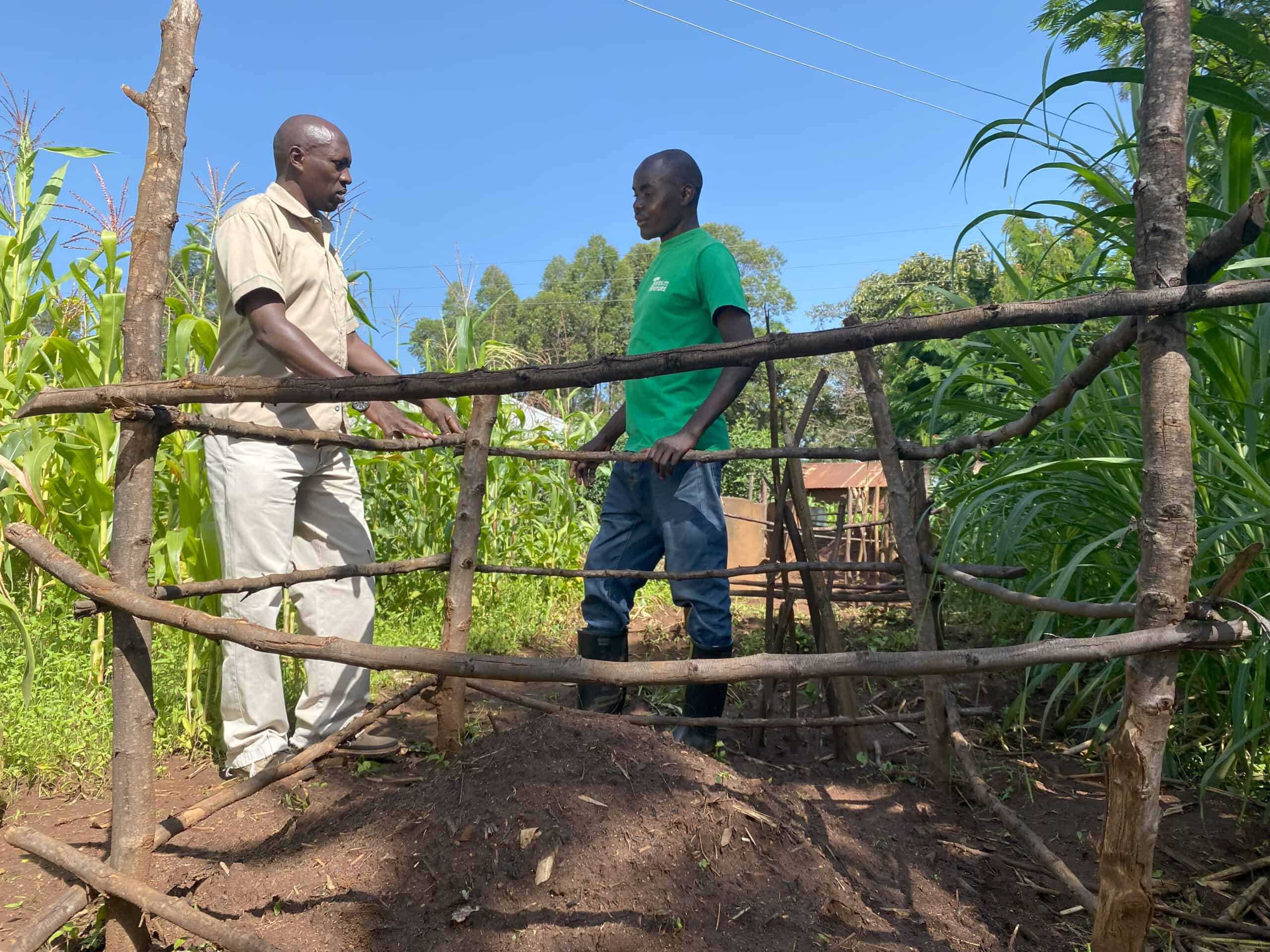
TREES Seed Bank Manager Robert Ochieng (left) visits with David at his compost pile to check in and see how his Forest Garden is progressing.
A Promising Future
From food production to climate change mitigation, David is using his Forest Garden to build a better life for himself and his 13-person household.
“Before, I had to take money from my pocket to get vegetables. Now, because I get vegetables from my Forest Garden, what I would have used to buy vegetables I can use to buy fish and meat and school items for my children.”
At 38 years old, David has just one year left in TREES’ training program. When he graduates, he will have all the knowledge and tools he needs to succeed on his land long-term. His Forest Garden will continue to have a positive impact on the land and the environment for generations to come.
